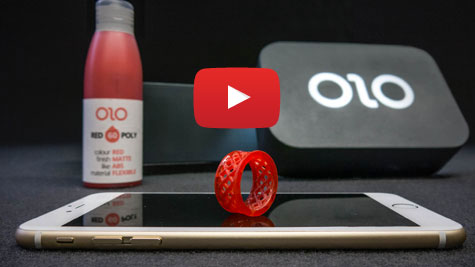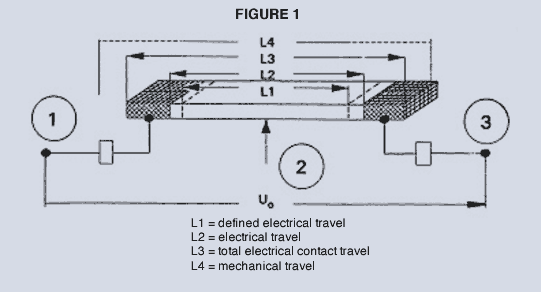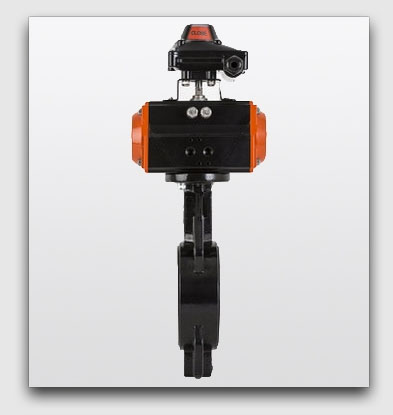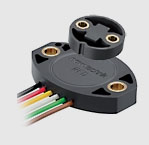
|
This issue’s articles: Featured video: Windvane Application To view newsletter in your browser click here. |
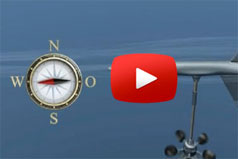 |
 Liquid 3D Printing Using Your SmartPhone!
Liquid 3D Printing Using Your SmartPhone!|
Last fall this news column announced breakthrough layerless 3D printing using Continuous Liquid Interface (CLIP) Technology. We reported a company named Carbon 3D harnessed oxygen and UV light to selectively trigger or inhibit photopolymerization of an object being grown. Now a new company has furthered this technology to harness your smartphone for the light source and to integrate the 3D information for the object to be printed. |
|
|
See it work! Source: http://www.olo3d.net |
|

 Selecting The Best Stroke Length
Selecting The Best Stroke Length| When an engineer specifies a position sensor for their application, there are a few universal aspects that need to be considered to maximize accuracy and avoid pitfalls. Mechanical stroke length, electrical stroke and electrically defined stroke are readily defined and vital to avoid overrun and sensor damage issues while designing in accuracy.
First, it helps to define the terms we are using. Referring to Figure 1, that represents a position sensor track, L1 indicates the defined electrical travel. L2 indicates the continued travel to where the track and bonding material begin to overlap, which becomes a nonlinear connection region as detailed in Figure 2. This is included in electrical stroke length but not defined electrical stroke. L3 indicates the total electrical contact travel of the potentiometer. L4 indicates the mechanical travel.
Requirement 1: total electrical stroke length (L2) should be a minimum of 5%, and preferably 10%, longer than the maximum stroke length your application requires. This ensures overrun errors and damage to the sensor are avoided. Requirement 2: The closer the defined electrical stroke length can match the application’s actual required mechanical stroke length, the larger the change in signal will be over the range of motion. This will give you the maximum signal to noise ratio. If you try and match a small mechanical stroke length to a large electrical stroke, the output voltage change of the signal (or current change) would likely be very small and result in large resolution steps when run through a 10- or 12-bit A/D converter. In closed loop applications, this can cause dither of an actuator, imprecise positioning and overruns of the targeted position. Linear position sensors are available in dozens of stroke lengths in small enough increments for virtually any application. For example, Novotechnik’s TLH has 20 different stroke lengths available– for short strokes in 25 or 50 mm steps between models and above 1,000 mm in 250 mm steps. Things are even easier with noncontact linear position sensors: many of the short and long stroke sensors come in different mechanical stroke lengths that can be individually programmed to - shorter than specified - strokes by the factory or – individually – by the customer, without special hardware or software. |

|
Actuators
|
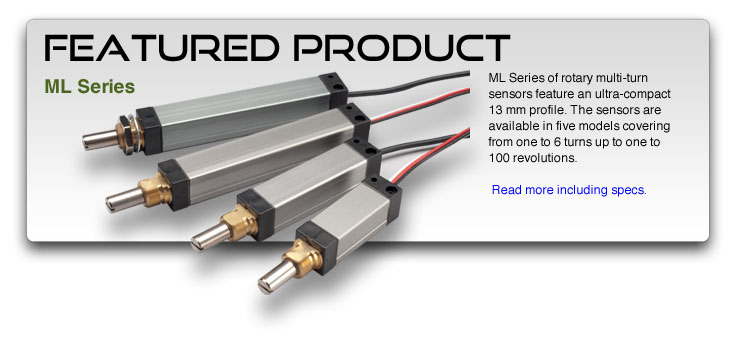
If If you have a question about position sensors for your specific application, Novotechnik engineers would be glad to speak with you. Contact us at Email Novotechnik info@novotechnik.comi or call 800-667-7492.
Please email suggestions for technical subjects you would like to suggest for this newsletter to this link: Newsletter Editor editor@novotechnik.com
